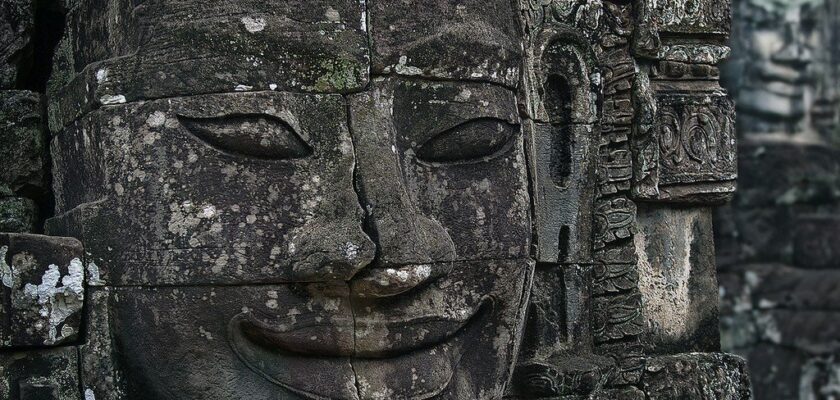Angkor Thom Temple
Angkor Thom, an ancient city, is the second most famous in the entire Angkor temple complex, after Angkor Wat, largely due to Bayon, the face-carved mountain temple. In Khmer, Angkor Thom means “big city.”
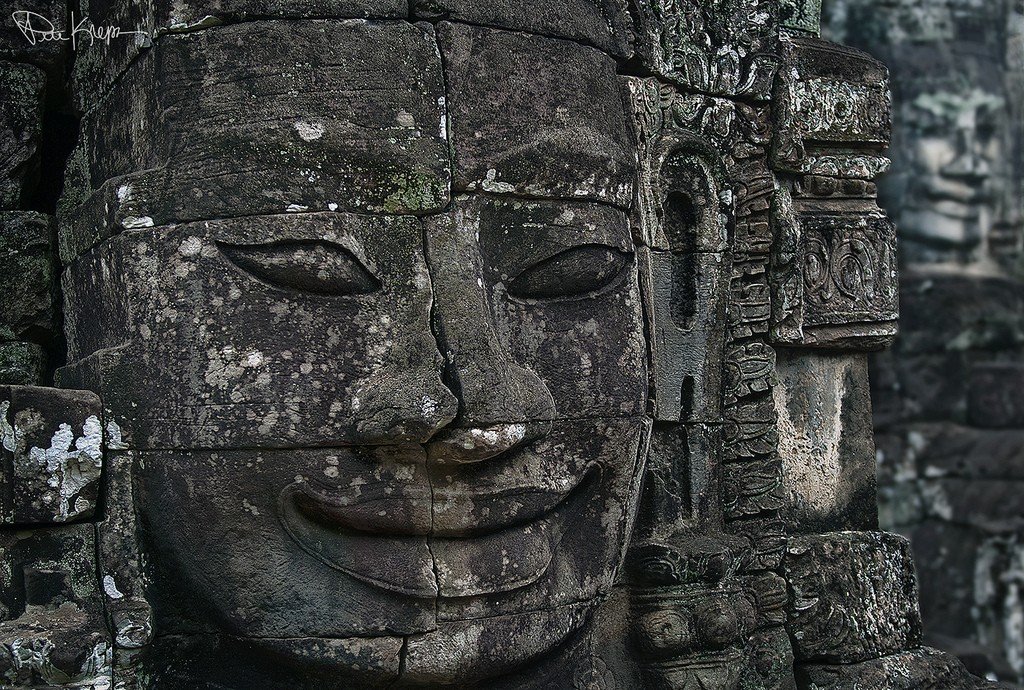
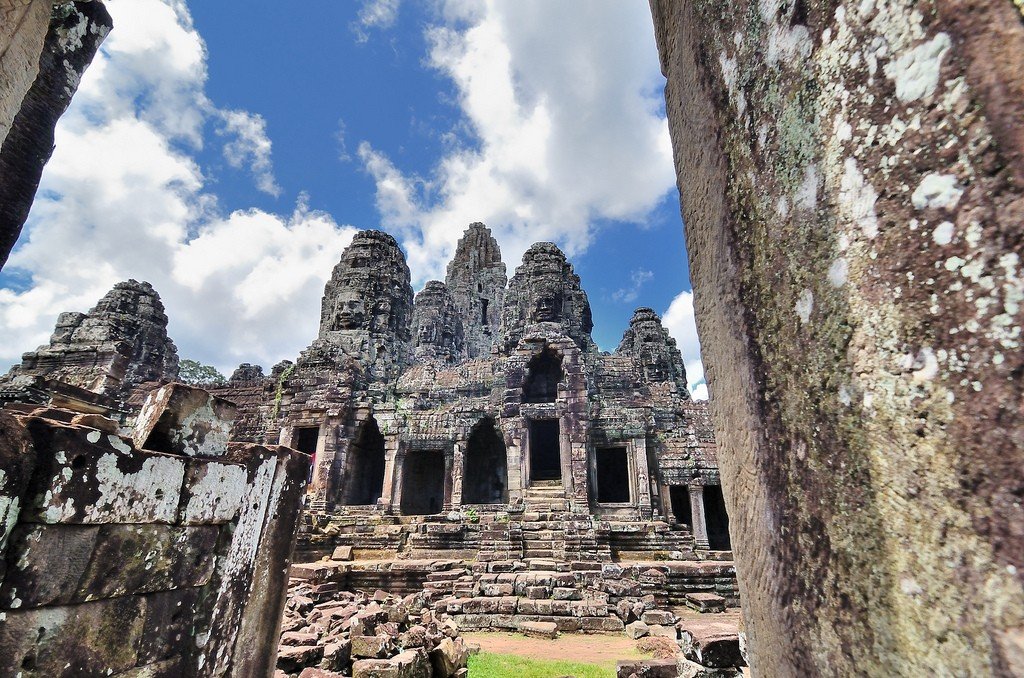
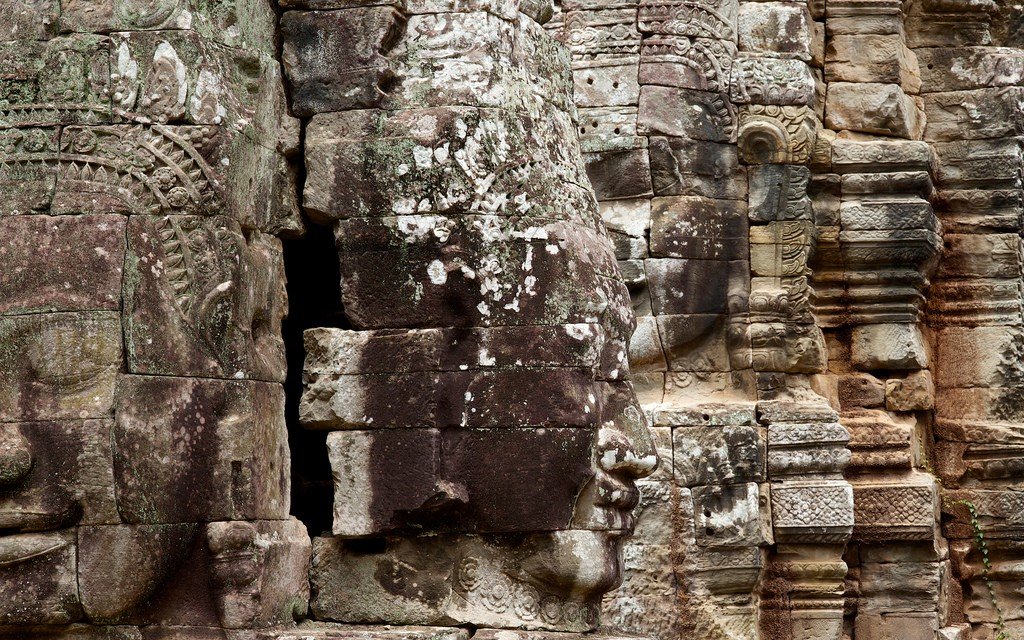
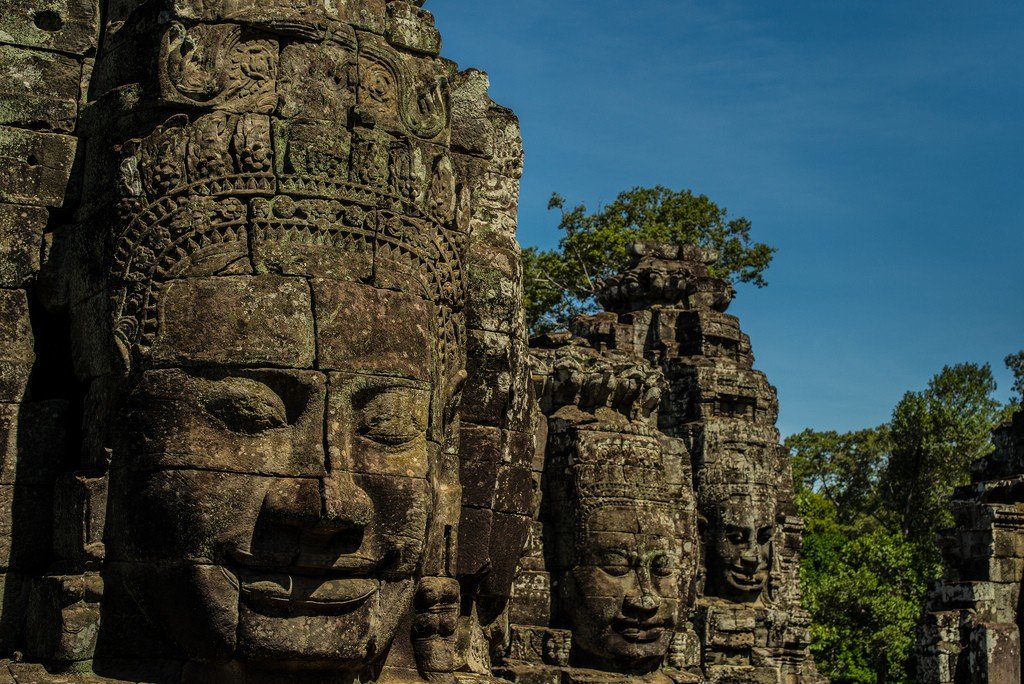
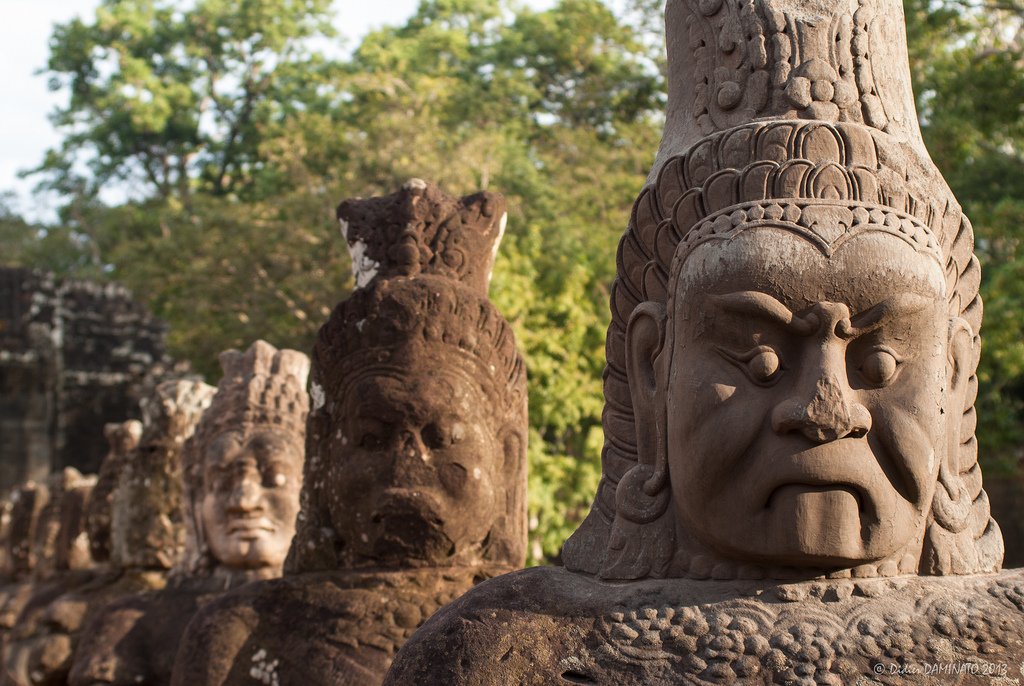
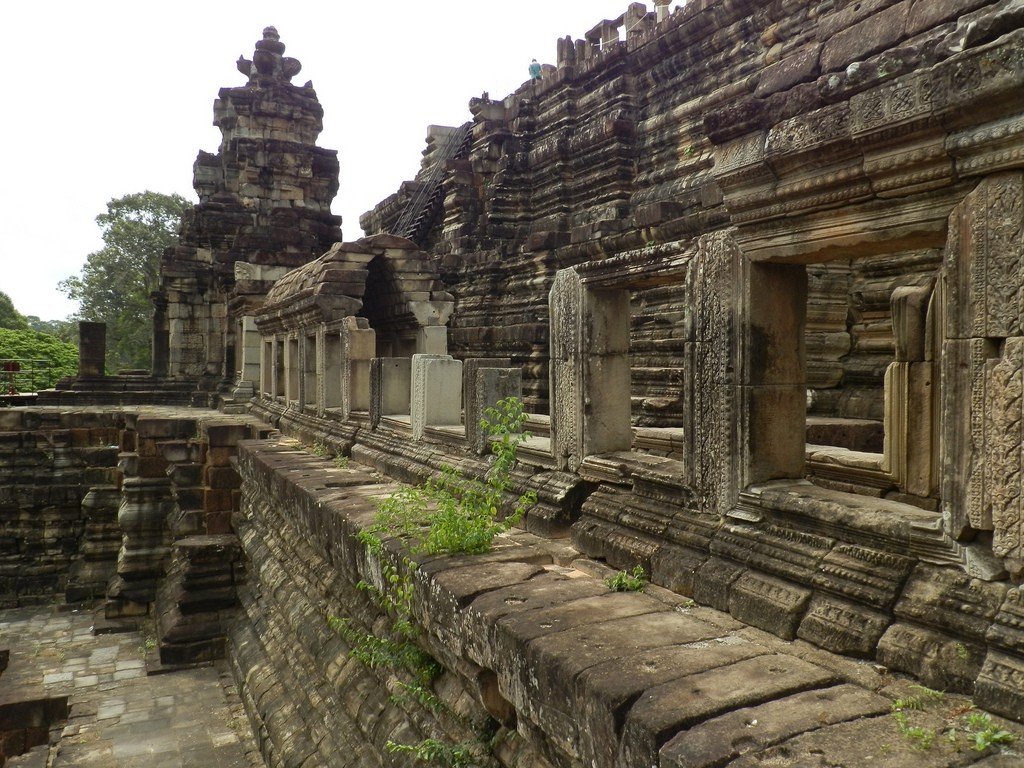
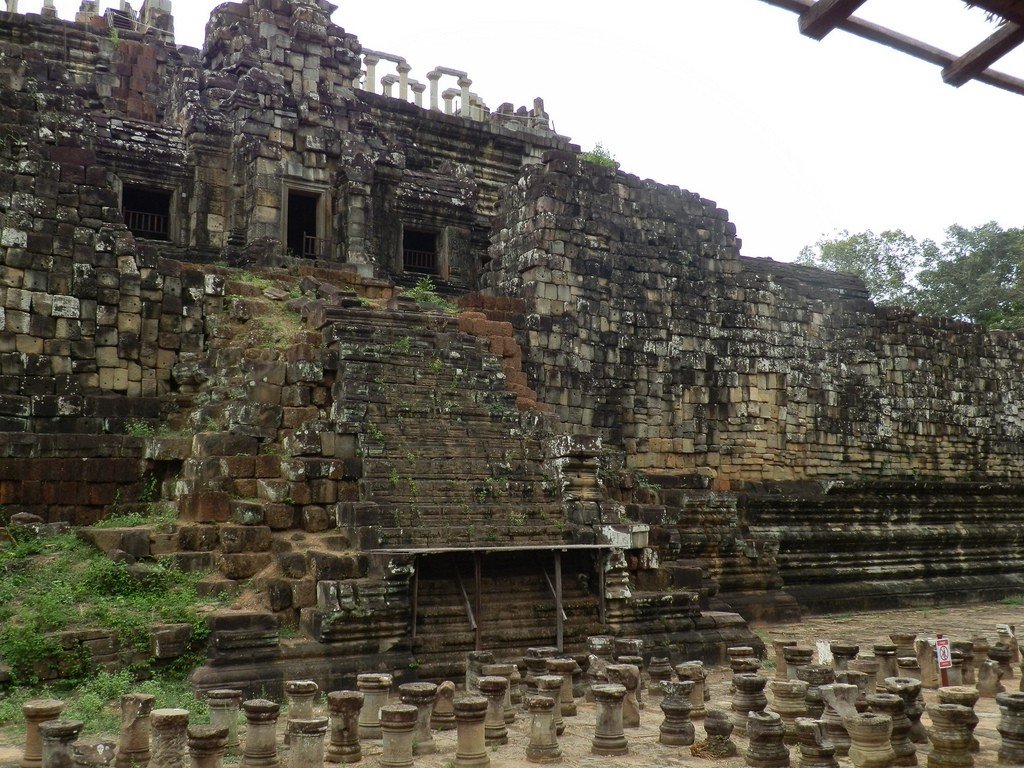
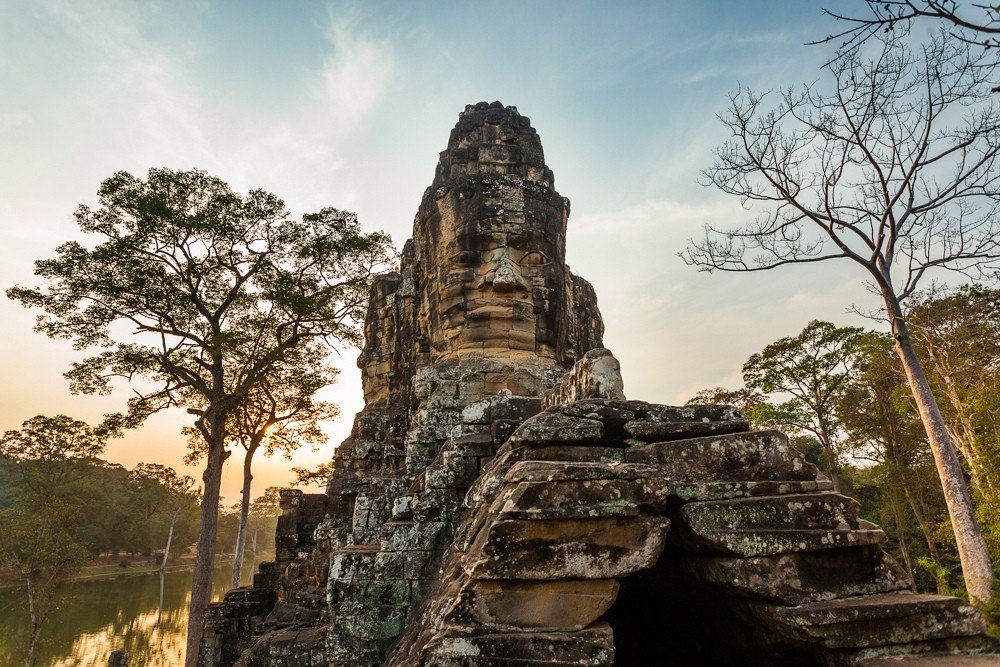
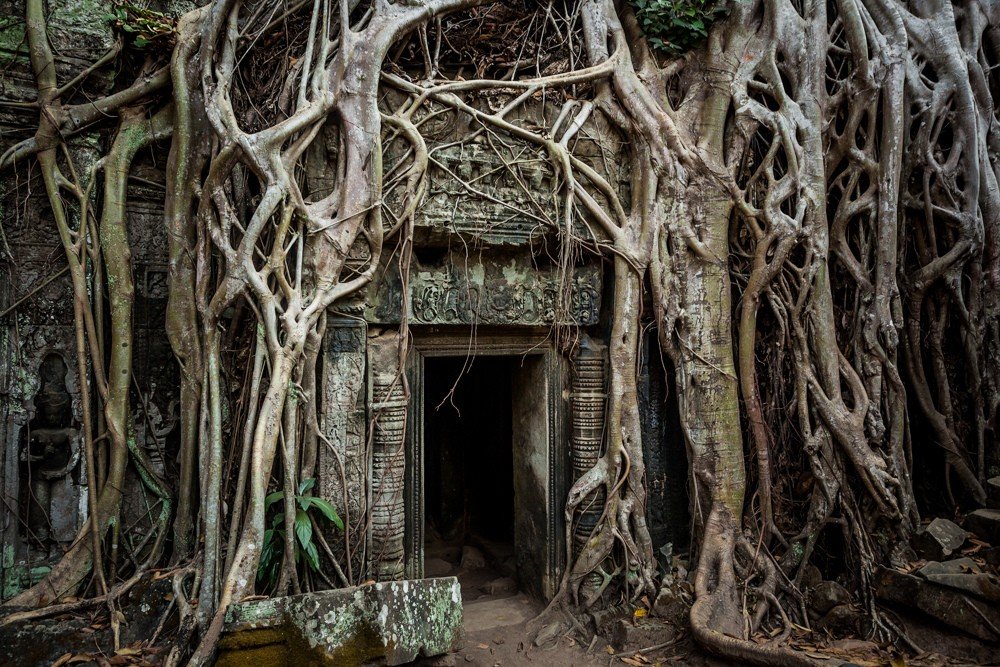
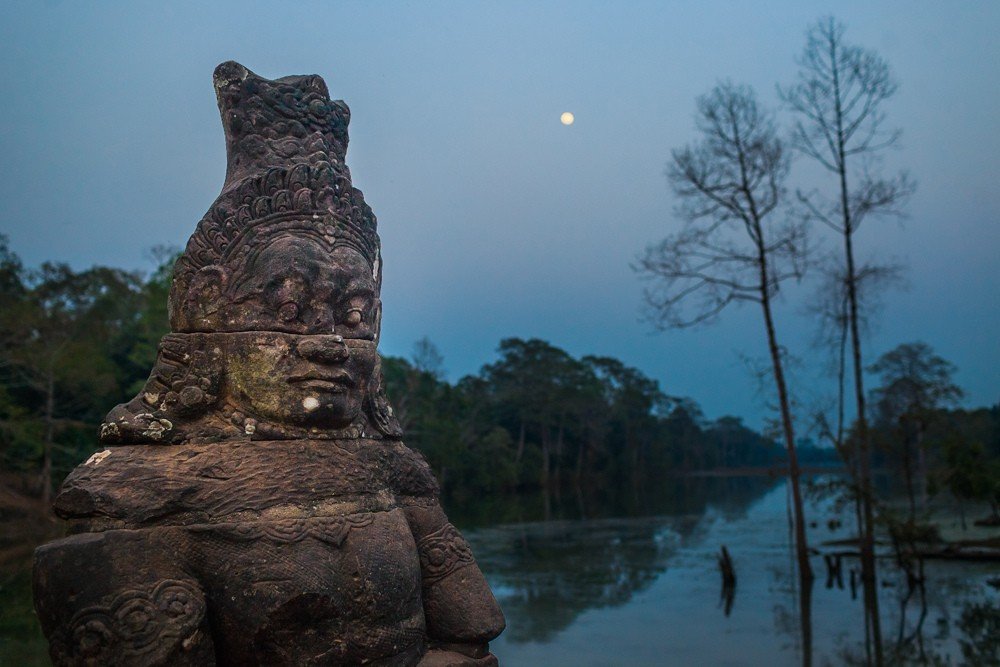
History
Angkor Thom was built in the late 12th – early 13th centuries during the reign of Jayavarman VII (Jayavarman VII) from 1181 to 1220 and became the capital of the Khmer state until the 15th century. Earlier on this territory was the former capital – Yashodharapura, however, after the attack of the Cham (Tham) in 1177, the city was very badly destroyed. Therefore, it was decided to build a new capital not far from the destroyed one. Therefore, not all temples on the territory of Angkor Thom were built by Jayavarman VII: Pimeanakas and Bapuon remained from the previous rulers. Jayavarman VII himself was a very revered ruler, he introduced a new religion to his subjects, Mahayana Buddhism, with Buddha as the symbol of worship.
.The population of the capital was about one million. The territory of the city was divided by axial roads into four equal parts, each of which had its own purpose. For example, in the northwestern part was located the Royal Palace, in the northeastern part – lived the king’s family, his cronies, priests, the southwestern part was given to a beautiful park, and in the southeastern part – were located markets and various administrative buildings. Outside the city wall lived commoners. All dwellings and some buildings were built of wood, so they have not survived to our time, the same fate befell and the Royal Palace, from it remained only a stone base behind the Terrace of Elephants.
.The symbolism of Angkor Thom is based on the legend of the plowing (sbaling) of the Ocean of Milk, displayed on one of the panels of Angkor Wat (in the south wing of the east gallery). This legend tells of the process of creation of the world, in which gods and demons take part (sculptures of them are located at the gate of Angkor Thom). They hold a serpent wrapped around the sacred mountain Meru (Bayon, located in the center of the city), representing the center of the world, and alternately pull on themselves, bringing the mountain in motion, thus foaming the Ocean, from which the nectar of immortality (amrita) is subsequently released.
.Architecture
Angkor Thom covers an area of 900 hectares and is shaped like a square divided into four equal parts by axial roads. The center of the intersection of the roads is Bayon. The territory of the city was surrounded by an embankment wall with a total length of 12 km, 8 meters high, along the top of the wall ran a sentinel road. In front of the wall was dug a ditch 100 m wide and 6 m deep, filled with water.
.
Entrance to Angkor Thom is through gates, there are 5 in total: one each from the north (North Gate), south (South Gate) and west (West Gate), and two from the east – East Gate and Victory Gate. Victory Gate is oriented towards the Royal Palace. The gate is 22-23 meters high, the width of the roadway under it is 3.5 meters, it is made in the Bayon style and has four towers, each tower is carved with the faces of the bodhisattva Avalokiteshvara (the god of supervision and compassion), with whom Jayavarman VII was identified. In addition, the gate on both sides is decorated with a sculpture of a three-headed elephant with trunks in the form of columns.In front of the gate, the gods (devatas) on the left and demons (asuras) on the right are lined up in a row, holding a multi-headed serpent (naga), representing the bridge between heaven and earth. Gods and demons equally on each side, 54 each, the gods holding the serpent by the head and the demons by the tail. By tugging on themselves they thus set the sacred mountain (Bayon) in motion.
.The presence of the Victory Gate has a certain meaning, consisting in the fact that the king’s army left for battle through this gate, thus foreshadowing a favorable outcome of the fight. In case of victory the warriors returned through them, in case of defeat – through other gates (perhaps – other eastern gates). Funeral processions passed through the eastern gate.
.What to see
Among the most significant and best preserved ruins and buildings are the following:
- Bayon
- Baphuon .
- Phimeanakas .
- Royal Palace .
- North Kleang and South Kleang
These are the first places to see, the rest is up to you and depending on the time available.
.Very often group tours start at the South Gate, which is the best preserved and restored. Then, along the way, to Bayon, Bapuon, Elephant Terrace, Royal Palace, Pimeanakas, Leper King Terrace, Tep Pranam, Preah Palilai, Preah Pit, Prasatam Suor Prat, North Kliang, South Kliang, then – exit to the east through Victory Gate. Or in the opposite direction if you enter through Victory Gate and exit through South Gate. It should be noted that the most visited gates are the southern, northern and Victory Gate, where sculptures of gods and demons have been preserved, while the western and eastern gates are worse preserved and therefore less in demand.
.Worth Knowing
- Some guides suggest visiting Angkor Thom in several steps. But in our opinion, the best option would be to see it in one go, the time to see it should be allocated half a day. At the entrance to Bayon and Bapuon entrance control is carried out, in the other temples it is absent..
- Since the distance to Angkor Thoma from the neighboring temple buildings is quite decent, so move to it and on it should be either by bicycle or motorcycle. .
- The best time for photography is early morning or sunset, when the temples are better lit and the light is softer.
Legend of the whipping of the milky ocean
Maharaja Bali, king of the Asuras, met Indra one day and in an outburst of favor presented him with a wreath. Indra in his arrogance hung this wreath on the trunk of his elephant, who could not appreciate the gift and threw it under his feet. Maharaja Bali considered it an insult, cursed Indra and prepared to go to war against the Devatas. The devatas, frightened by the curse and feeling that they could not stand against the asuras, sought Vishnu’s help. To reconcile them, Vishnu offered to extract the elixir of immortality amrita in an unusual way – by whipping an ocean of milk. They used the very heavy golden mountain Mandara as a load, and persuaded the king of snakes Vasuki to act as a rope, promising him a portion of the amrita. Soon the mountain began to sink, but Vishnu came to the rescue in the incarnation of the giant turtle Kurma, who held the mountain on his back. Then a snake appeared from the sea, spitting deadly poison that covered the waves, threatening to destroy all living things. Shiva saved everyone by drinking the poison from the surface of the milk, which turned his throat blue. Then herbs were thrown into the milk ocean, and 14 treasures came out, among them – white elephant Airavata, Indra’s charioteer, horse Uchaisravas, which was taken by Maharaja Bali, countless apsaras (celestial nymphs) – they are depicted here as an ornament, Lakshmi, the goddess of beauty and fertility who became the wife of Vishnu, and finally the god of health Dhanvantari with the heavenly nectar of immortality amrita.
